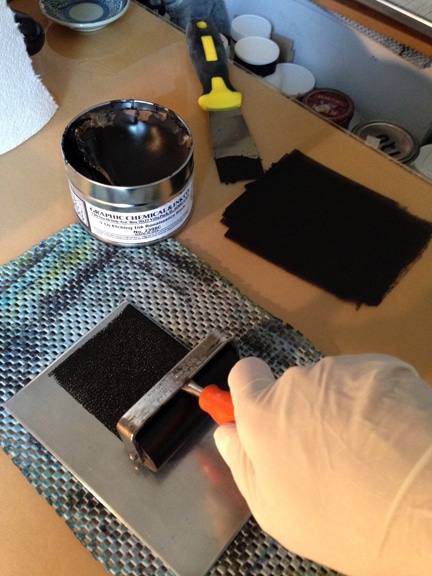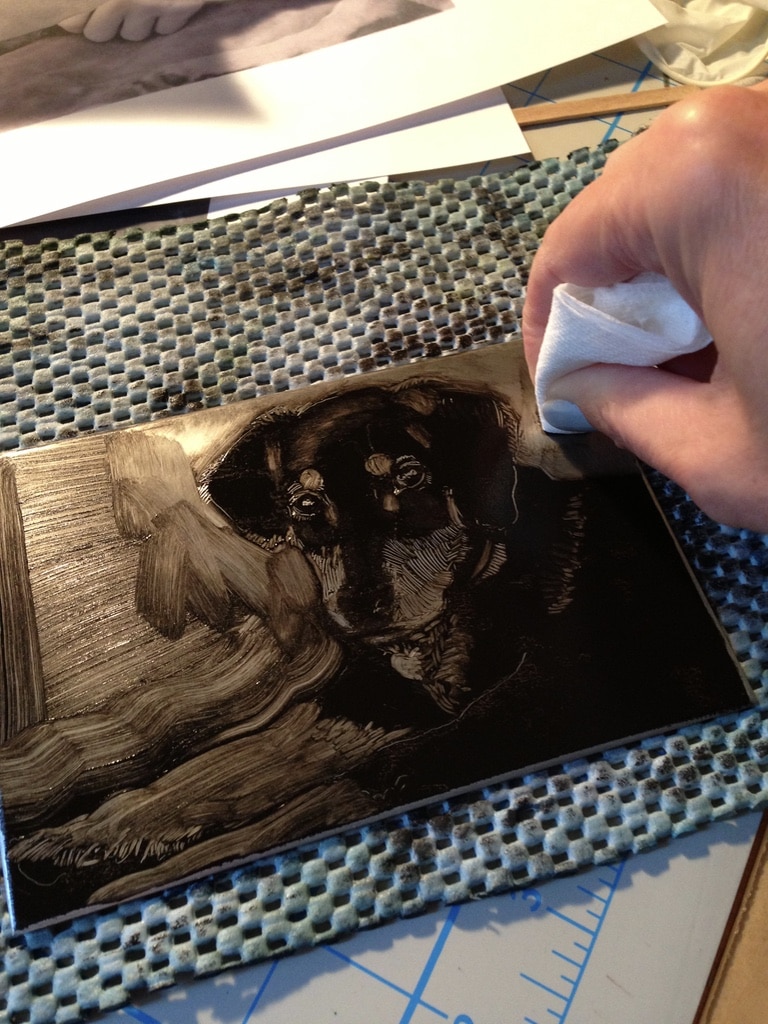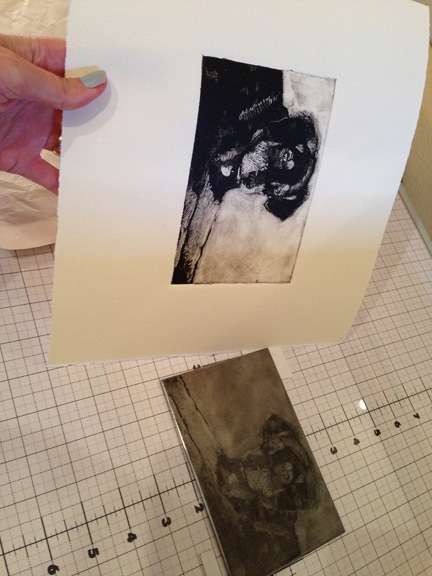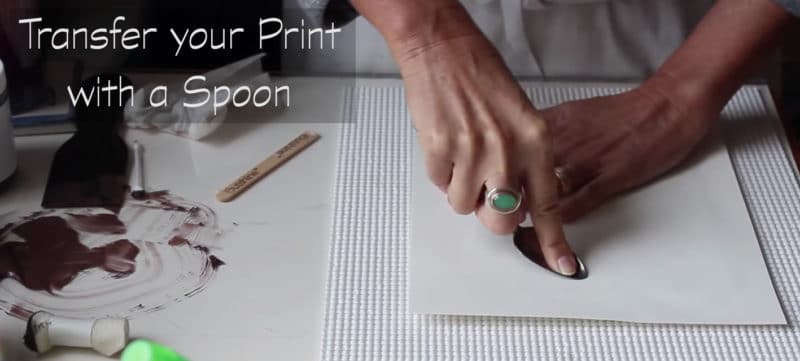Making Pet Portraits with Monotype Prints
Dark Field Monotypes (and monoprints) work very well as a media for pet portraits. These painterly prints in their monochromatic layout act as a perfect underpainting for experiments with other media, both wet (watercolor) and dry (colored pencil or pastel, etc.)
If you’d like to watch demonstrations of the process, visit my youtube channel to see this playlist of monotype lessons.

Renaissance Black, rolled with a brayer onto a zinc plate (but you can use plexiglass, or yupo for your plate).
This is an oil based ink, and it cleans up beautifully with a little vegetable oil, or citrasolv – followed by dish soap that specializes in grease cleaning.

All Animal Portraits Welcome
Once the plate is coated in ink, you can use your reference photo of a dog, cat, bird or goat – whatever you happen to love – to begin wiping light into the pigment. (Making a portrait of a person is fun too.)
This subtractive process takes a little experimenting and familiarity, but once you’ve pulled a few prints, the process is so quick and fun, it becomes addictive!

Pulling the monotype after a trip through the etching press, where BFK Rives paper was pressed (with lots of pressure) into the still-wet ink on the plate, which transferred the image from the plate to the printmaking paper.
Use the Right Supplies
You don’t need a printing press to pull a dark field monotype. What you do need is ink that doesn’t dry on the plate, so you’ll have time to manipulate the pigments, and paper that’s meant for printmaking.
Most relief inks (for linocut or woodcut) sold in American art supply stores are water based, and quick drying, so they wouldn’t work for this. Many of those inks will also re-wet, so you can’t paint your print with wet media after it dries. (These inks stay wet, and won’t re-wet once they’re dry.)
Other than the specifics of good printmaking ink, and appropriate paper, you can simply transfer the image from the plate to the paper with a soup spoon and a little elbow grease at your kitchen table. (Listen to an audiobook while you work. I’m listening to this one now.)

Katie – 4×6 inch dark field monotype (sold)

Signing a Monotype or Monoprint
Unlike other forms of printmaking that are editioned – or printed in multiples so they can be distributed to many collectors, monotypes and monoprints are singular impressions.
When signing an editioned print, the artist traditionally writes the title of the print, the number of the print and the edition size separated by a slash (4/25 would be print number 4 in an edition of 25), and their signature underneath the print.
Since there is no print number in a monotype, artists can leave that off and just write the title and their signature. Some artists like to include the number 1/1 where the edition count would normally be noted, just to confirm that it is one print of one.
The arrangement of title, then edition size, and then signature from left to right under the plate impression is typical, but that arrangement is up to the artist.

Make Your First Monoprint
If you’d like to try making a dark field monotype pet portrait, visit this page for a list of supplies with links to online sources, as well as a play list of video tutorials, suggested reference books for your art library, a roundup of previous posts on the subject of monotype printmaking and more process shots to whet your appetite.
If you try making a monotype or a monoprint and you get stuck, or can’t figure something out, circle back around to this post, and leave a comment. I check them regularly, and I’m glad to try and help. Until then, happy printing!
Thanks for stopping by and I’ll see you in the next post –
Belinda

Art Quote
In an era of electronic communication, it is often forgotten that in the last quarter of the nineteenth century, illustrated books and periodicals were the only vehicle for bringing images of the world into American homes.
Weekly magazines with serialized stories generated the same anticipation as a favorite weekly television program. Books by important authors were greeted with the same excitement as major motion pictures.
New productions were enthusiastically reviewed, and illustrations hung next to paintings in the nation’s most prestigious exhibitions. In the years following the civil war, it was not unusual for illustrators to enjoy financial success, widespread fame and a lifestyle of luxury.
Alice Carter – Red Rose Girls: an Uncommon Story of Art and Love



Hi Lorna, Akua inks are perfectly safe to use on Gelli Plates. If you check the FAQ list on the Gelli site, I believe they list the brands of ink they recommend. Akua inks are made with soy, and they’re water washable. Just be sure to print on paper that has some ability to absorb. The ink won’t dry unless they can absorb into the pulp of your paper.
Does the akua inks not ruin the Gelli plate. I was told not to use any oil based media on them
Hi David, I agree. I use their intaglio ink with modifiers for relief, intaglio and monotype prints, Amanda they’re versatile and effective. Which style of printmaking do you use them for?
It takes some time to learn how to use Akua inks and modifiers. But it’s worth it. They give brilliant results.
Hi Ann, yes, I’ve used Akua inks many times for animal monotypes. And people portraits. And landscape monotypes… On plexiglass and gelli plates and Yupo and drafting film plates too! The world ? is your oyster. Stir your ink and make a monotype soon! ??
Nice idea and great prints! What about using akua inks for these? Would that work?